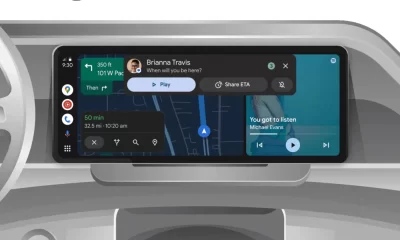Google Pixel 9 Pro Fold: A strong contender in the foldable race as shipping delays hit

Top 3 Key Points:
- Pixel 9 Pro Fold vs. Samsung: Google’s second foldable outperforms Samsung’s Galaxy Z Fold6 in key hardware features, marking a significant shift in the foldable market.
- Shipping Delays: High demand causes Pixel 9 Pro shipping delays, with some variants pushed back to mid-September.
- Stock Issues: Pixel 9 Pro Fold’s “Porcelain” variant faces early stock shortages, hinting at limited availability.
Google recently held its Pixel 9 series event, and the standout device is the Google Pixel 9 Pro Fold. This marks only the second foldable from Google, yet it’s already challenging Samsung’s Galaxy Z Fold6, which is in its sixth generation.
Superior Hardware Features
Despite being new to the foldable scene, Google has managed to outdo Samsung in several critical areas with the Pixel 9 Pro Fold. A major complaint with Samsung’s Galaxy Z Fold series has been the aspect ratios of its displays, particularly the narrow cover screen. The Pixel 9 Pro Fold addresses this with a 6.3-inch cover display that boasts a standard 20:9 aspect ratio and a 1080p resolution. This is a noticeable improvement over the Z Fold6’s narrower 968p cover screen.
Moreover, the folding display on the Pixel 9 Pro Fold is larger, with a size of 207.4 cm² compared to the Z Fold6’s 185.2 cm². It also offers a higher resolution and a nearly 1:1 ratio, which is more practical for multitasking—one of the primary reasons users opt for foldable devices.
Sleeker Design, Heavier Build
Google has made the Pixel 9 Pro Fold impressively thin, measuring just 10.5mm when folded—thinner than both the Galaxy Z Fold6 and the OnePlus Open. Unfolded, it’s only 5.1mm thick, which is just slightly thicker than its USB-C port. Although the Z Fold6 is lighter by 18 grams, the Pixel 9 Pro Fold’s slim profile might be more noticeable in daily use. Both devices are water-resistant, though neither is suitable for swimming.
Enhanced Performance and Camera Capabilities
The Pixel 9 Pro Fold is equipped with 16 GB of RAM, a step up from the Z Fold6’s 12 GB, allowing for smoother multitasking and better responsiveness. While the Galaxy Z Fold6’s Snapdragon 8 Gen 3 chip might have a performance edge over Google’s Tensor G4, the extra RAM in the Pixel 9 Pro Fold could offset this difference in everyday use.
In terms of cameras, the Pixel 9 Pro Fold stands out with a longer-reaching zoom camera and autofocus on its ultrawide camera, despite the Z Fold6 having a larger main sensor.
Battery Life and Availability
The Pixel 9 Pro Fold also has a slightly larger battery, though real-world endurance tests will determine if this translates to better battery life. However, both the Pixel 9 Pro Fold and Z Fold6 have relatively slow charging speeds.
Despite these advantages, the Galaxy Z Fold6 is still expected to outsell the Pixel 9 Pro Fold, thanks to Samsung’s established reputation, broader availability, and additional features like S Pen support.
Shipping Delays and Stock Issues
Google announced that the Pixel 9 series would start shipping on August 22. However, due to high demand, the Pixel 9 Pro’s shipping dates have been pushed back to mid-September. The most affected variant is the 128GB “Hazel,” with delays extending to September 17 in some regions. Third-party retailers like Best Buy have listed the device as “coming soon,” while Amazon is still accepting pre-orders with slightly better availability.
As for the Pixel 9 Pro Fold, the “Porcelain” variant is already out of stock, though the “Obsidian” model is expected to start shipping in early September. These early stock issues suggest limited availability, similar to what happened with the original Pixel Fold.
In conclusion, while Samsung’s Galaxy Z Fold6 remains a strong competitor, Google’s Pixel 9 Pro Fold is making significant strides in the foldable market, offering a fresh challenge to the foldable market leader.
Google Meet gets a fresh new look with Material 3 design

Google Meet is getting a big update to its look, thanks to the new Material 3 design. This change brings a cleaner and more modern style to the video calling app, making it easier and more enjoyable to use.
With Material 3, Google Meet now has rounder buttons, softer colors, and better spacing between elements. The main controls, like the microphone, camera, and end call buttons, are now larger and easier to tap. The icons and text are also clearer, which helps users find what they need quickly during a call.
Another improvement is the new “expressive” color system. This feature lets the app’s colors match your device’s wallpaper or theme, giving each user a unique and personalized experience. The changes also make Google Meet more accessible, as the new design is easier to read and use for everyone, including people with vision difficulties.
These updates are rolling out to both web and mobile versions of Google Meet. Google says the new look will help people feel more comfortable and focused during their meetings. Overall, the Material 3 update makes Google Meet not only look better but also work better for all its users.
Android
Easy ways to change Android Auto’s look with light and dark themes

Android Auto is a helpful tool that lets you use your phone’s apps safely while driving. It connects your phone to your car’s screen, making it easier to use maps, music, and calls. One of the features many people like is the ability to change how Android Auto looks by switching between light and dark themes.
How to switch between light and dark themes
Android Auto offers two main themes: light and dark. The light theme uses brighter colors, which can make the screen easier to see during the day. The dark theme uses darker colors, which can be more comfortable for your eyes at night or in low light.
To change the theme, follow these steps:
- Open the Android Auto app on your phone.
- Go to the settings menu.
- Find the “Theme” option.
- Choose between “Light,” “Dark,” or “Set by car” (this lets your car decide the theme based on the time of day or your car’s settings).
Why themes matter
Using the right theme can make driving safer and more comfortable. The light theme is good for bright days, while the dark theme helps reduce glare at night. Having these options means you can pick what works best for you, making Android Auto easier to use in any condition.
In short, Android Auto’s theme options are simple to use and help you drive more safely by making the screen easy to see, no matter the time of day.
Google Drive and Files by Google get fresh updates for easier use

Google is rolling out some helpful updates to two of its popular apps: Google Drive and Files by Google. These changes are designed to make managing your files and watching videos much smoother.
First, Google Drive is getting a new video player. Now, when you upload a video to Drive and open it, you’ll notice a fresh look that matches Google’s latest design style. The controls, like play and pause, are easier to use and look cleaner. This update makes it simpler to watch videos directly in Drive without needing to download them first.
Meanwhile, the Files by Google app is also getting a makeover. The app is adopting Google’s Material 3 design, which means it looks brighter and more modern. The buttons and menus are easier to see and use, making it simpler to find, move, and organize your files. There are also new color options and improved icons, so everything feels more user-friendly.
Both updates show Google’s commitment to making its apps more helpful and enjoyable to use. Whether you’re watching videos in Drive or sorting files on your phone, these changes aim to save you time and make things less complicated. If you use these apps, keep an eye out for these new features—they should arrive soon!
-

 Apps1 year ago
Apps1 year agoGboard Proofread feature will support selected text
-

 News1 year ago
News1 year agoSamsung USA crafting One UI 6.1.1
-

 Apps1 year ago
Apps1 year agoGoogle Contacts app testing new Besties Widget
-

 AI12 months ago
AI12 months agoGoogle Pixel 9 Pro may come with a complimentary one-year Gemini Advanced subscription
-

 Apps12 months ago
Apps12 months agoGoogle working on a new video editing feature for its Photo app
-

 Apps12 months ago
Apps12 months agoGoogle Maps lets you report traffic jams and accidents on Apple CarPlay, but not on Android Auto
-

 News1 year ago
News1 year agoBreaking: Samsung Galaxy S22 may get Galaxy AI features
-

 Apps1 year ago
Apps1 year agoGoogle Messages app will transform MMS chats into RCS










